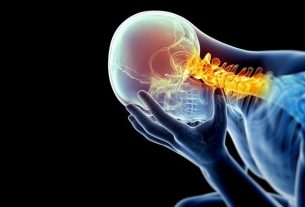Isometheptene is an analgesic indicated for headaches or migraines, and is normally found in association with dipyrone and caffeine, as it acts by causing blood vessels to contract, which helps to reduce pain and increase the analgesic and antispasmodic effect of dipyrone. and caffeine.
This medicine can be found in pharmacies or drugstores, in the form of tablets or drops, containing isometheptene mucate, dipyrone, sold under the trade names Neosaldina or Doralgina, for example.
Although isometheptene can be purchased without a prescription, it is important that the treatment of a headache or migraine is carried out under medical supervision, after evaluating its cause. See the main causes of headaches.
What is it for
Isometheptene is indicated for the treatment of various types of headaches, including migraines. Check out the main types of headache.
Furthermore, due to its analgesic effect, isometheptene can also be indicated for relieving pain caused by abdominal cramps.
Isometheptene begins to take effect approximately 15 to 30 minutes after ingestion and lasts for approximately 4 to 6 hours.
How to use and dosage
Isometheptene must be taken orally, at times established by the doctor.
The dosage of isometheptene varies according to its presentation, which includes:
- Pills (isometheptene 30 mg, dipyrone 300 mg and caffeine 30 mg): The normally recommended dose for adults or children over 12 years of age is 1 to 2 tablets, in a single dose, taken every 6 hours, as per medical advice. The maximum dose is 8 tablets per day;
- Drops (isometheptene 50 mg, dipyrone 300 mg and caffeine 30 mg): the normally recommended dose for adults or children over 15 years of age is 30 to 60 drops, taken in a single dose, every 6 hours, as per medical advice. For children aged 1 to 14 years, the dose must be calculated by the pediatrician according to the child’s weight.
Isometheptene should be used for the duration of treatment advised by the doctor.
Possible side effects
The most common side effects that may occur during treatment with isometheptene are pain in the stomach or intestine, poor digestion or diarrhea, reddish color of urine, low blood pressure, cardiac arrhythmias, burning or hives on the skin.
Isometheptene can cause serious allergic reactions that require immediate medical attention. Therefore, you should stop treatment and seek the nearest emergency room if you experience symptoms such as difficulty breathing, coughing, swelling in the mouth, tongue or face, redness or formation of blisters on the skin. Know how to identify the symptoms of a serious allergic reaction.
Furthermore, as it contains dipyrone in its formulation, this medicine can cause agranulocytosis, which is a decrease in the number of white blood cells that participate in the body’s defense against infections. This condition can be perceived through symptoms such as the formation of sores in the mouth, fever, chills, prostration in which the adult or child may have a soft body or slow movements, and it is recommended to take the child or go to the hospital immediately, as agranulocytosis can put lives at risk.
Who shouldn’t use
Isometheptene should not be used by pregnant or breastfeeding women, during high blood pressure attacks, in the presence of changes in the blood test, or by people with impaired bone marrow function or diseases related to the production of blood cells. .
Furthermore, this remedy should not be used by people who are allergic to isometheptene or any other component of the formula.
The use of isometheptene by children should only be done if recommended by the pediatrician, and the tablets should not be used by children under 12 years of age, and the drops should not be used by children under 1 year of age.
As it contains dipyrone in its composition, this medicine should also not be used by people with acute intermittent hepatic porphyria or congenital deficiency of glucose-6-phosphate dehydrogenase.
Bibliography
- BRAINPHARMA IND. QUIM FARM S.A Doralgin (dipyrone + isometheptene mucate + caffeine). 2013. Available at: <https://static-webv8.jet.com.br/drogaosuper/Bulas/7896714210070.pdf>. Accessed on June 27, 2022
- COSMED INDÚSTRIA DE COSMÉTICOS E MEDICAMENTOS SA Neosaldina (dipyrone + isometheptene mucate + caffeine). 2021. Available at: <https://docs.google.com/gview?url=https://uploads.consultaremedios.com.br/drug_leaflet/Bula-Neosaldina-Paciente-Consulta-Remedios.pdf?1651240971&embedded=true> . Accessed on June 27, 2022

Sign up for our newsletter and stay up to date with exclusive news
that can transform your routine!
Warning: Undefined array key "title" in /home/storelat/public_html/wp-content/plugins/link-whisper-premium/templates/frontend/related-posts.php on line 12
Warning: Undefined array key "title_tag" in /home/storelat/public_html/wp-content/plugins/link-whisper-premium/templates/frontend/related-posts.php on line 13




